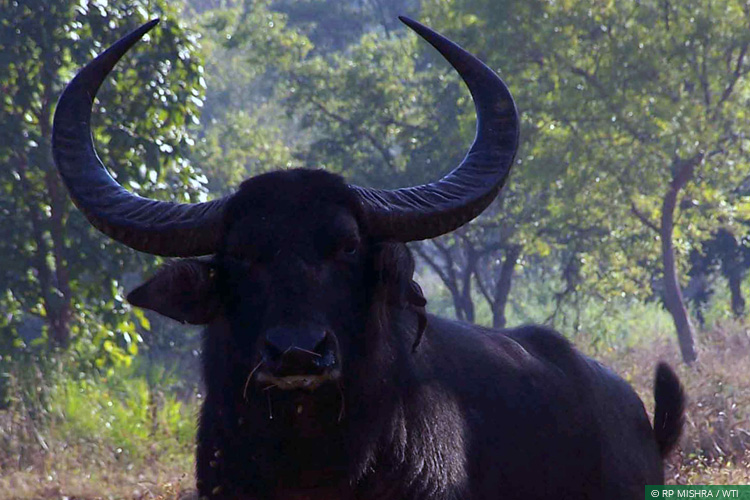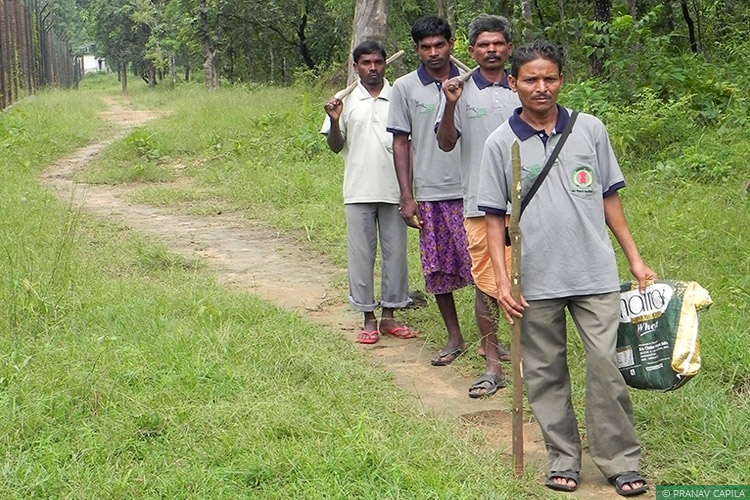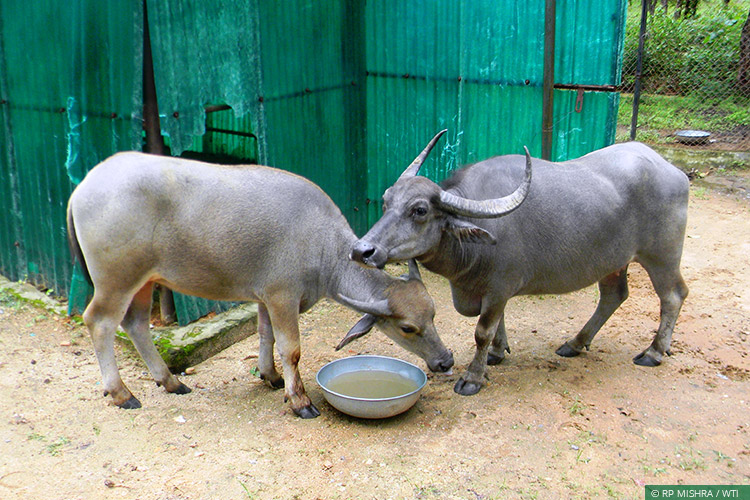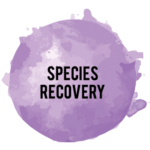Project Info
Project Description
THERE IS MUCH MORE TO INDIA’S WILDLIFE than the widely-talked-about flagship species like the tiger, the rhino or the elephant. While conservation efforts dedicated to these flagships trickles down benefits to other species that share their habitat, certain species require more than just these indirect interventions for survival.
The wild buffalo (Bubalus arnee) population of Central India is one such example whose local existence is gravely threatened. Once found in abundance across northeast India extending to northern and central India, the species now has its last bastions in some pockets in northeast India and Chhattisgarh in central India.
The estimated population of the wild buffalo in the northeast is roughly around 3000-4000 individuals, and constitutes the largest population aggregate within the Indian landscape today, accounting for almost 92% of the world population.
The situation in central India is far more dire. A Wildlife Trust of India (WTI) survey estimated not more than 50 individuals in three sub-populations in Indravati National Park, Pamed and Udanti Wildlife Sanctuaries in Chhattisgarh. A thorough count was conducted only in Udanti, as the other two protected areas faced political disturbances. The survey established that only seven wild buffaloes remained in Udanti in mid-2010 and that only one of them was female.
 Asiatic wild buffalo are a record breaking species – their horns spread up to 2m, exceeding in size the horns of any other living bovid
Asiatic wild buffalo are a record breaking species – their horns spread up to 2m, exceeding in size the horns of any other living bovid
In addition to their critically low population, wild buffaloes in Udanti also face threats in the form of extreme competition for resources from livestock, conflicts and habitat degeneration among others.
The wild buffalo is listed in Schedule I of the Indian Wild Life (Protection) Act, 1972. With less than 4000 individuals estimated to be remaining in the wild, the species is also classified as endangered in the IUCN Red List of Threatened Species.
The Central India Wild Buffalo Recovery Project aims to stabilise the wild buffalo population in Udanti-Sitanadi Tiger Reserve, Chhattisgarh by implementing a number of ex situ and in situ interventions.
A joint venture between WTI and the Chhattisgarh Forest Department, the project began with the evaluation of the number of wild buffaloes in four wildlife sanctuaries – Udanti, Pamed, Sitanadi and Bhairamgarh – and a national park – Indravati – in Chhattisgarh. The survey revealed that no buffaloes remained in Sitanadi and Bhairamgarh WLS. Indravati NP had a relatively large population of about 30 individuals and Pamed WLS had 5-8 buffaloes, but no conservation initiatives could be undertaken in these protected areas because of the security situation.
Following these stark revelations, WTI helped the forest department prepare a five-year Action Plan for the recovery of the wild buffalo population in Udanti. The Action Plan, which was subsequently approved by the governing council of the project, was comprised of three basic objectives:
- Ensuring zero unnatural deaths of the remaining individuals
- Habitat improvement
- Population augmentation by re-stocking (especially females) from closely-related populations or conservation breeding.
 To create a sense of ownership towards the project among local communities, tribesmen are employed as animal keepers and trackers
To create a sense of ownership towards the project among local communities, tribesmen are employed as animal keepers and trackers
In line with the first objective, constant monitoring, periodic health examinations and treatment as required are being undertaken. Over the years, the monitoring exercise has resulted in fairly detailed data on the ranging ecology of the buffaloes.
Habitat restoration activities like de-weeding, fire prevention and ensuring water availability have been conducted to provide a suitable habitat to the wild buffaloes.
Socio-economic surveys conducted in 15 of the 17 fringe villages of Udanti revealed that the people were dependent mainly on agriculture for their livelihood. To mitigate human-wild buffalo conflict, the forest department has initiated a compensation scheme for losses incurred by public due to crop damage by wild animals. The Wild Buffalo Recovery project records instances of these conflicts, and coordinates quick compensation to prevent a backlash by the affected people.
A WTI survey estimated not more than 50 individuals across in Indravati National Park, and Pamed and Udanti Wildlife Sanctuaries in Chhattisgarh.
These socio-economic surveys also revealed that 81% of the households owned livestock and that the domestic cattle were left to graze inside the sanctuary throughout the year. The studies on the ranging ecology of the wild buffaloes revealed that they avoided areas occupied by domestic buffaloes and in fact even adopted nocturnal habits to avoid these animals. To reduce competition and improve habitat suitability for the wild buffaloes, local people have been encouraged to sell off their buffaloes. The project also organises preventive vaccination of domestic livestock around Udanti WLS.
One of the most important initiatives of the wild buffalo recovery project is the in situ conservation breeding of wild buffaloes. Soon after finding the status of the Udanti wild buffalo population, the lone female buffalo, Asha, and her male calf were confined in a spacious boma within the sanctuary for its safety. The calf was subsequently released in the wild. Asha conceived a healthy female calf named Kiran in March 2015, bringing the total number of wild buffaloes in Udanti to 11.
For population augmentation, re-stocking of wild buffaloes in Udanti is being planned. Currently, genetic studies are being carried out to identify closely-related populations.
Apart from these activities, the project lists out a number of other urgent interventions to secure the wild buffalo population of Central India. These include protection of the buffaloes by improving basic infrastructure of the protected areas administration, habitat improvement by facilitating voluntary relocation of villages from wild buffalo habitat, and prevention of epidemics among many others.
 Asha (right) and her calf Kiran, probably the only two female wild buffaloes in the central Indian population
Asha (right) and her calf Kiran, probably the only two female wild buffaloes in the central Indian population
Wild Buffalo Recovery Project Highlights
- The population of endangered wild buffaloes has gone up to 11, as an outcome of the conservation breeding programme.
- De-weeding has been carried out in about 1200 hectares in grasslands within the sanctuary to make habitat suitable for the wild buffaloes. Additionally, the Forest Department has dug up/deepened a number of water pools, and has identified and maintains summer waterholes to ensure water availability during summers.
- More than 3500 of the 5000 heads of livestock in the vicinity of the sanctuary are vaccinated annually to prevent disease transmission to the wild animals.
- Since beginning the programme to free the sanctuary of domestic buffaloes, about 115 of the 300 domestic buffaloes have been sold by villagers living in the vicinity.
- Smokeless (fuel-efficient) cook stoves in two villages of sanctuary to reduce fuelwood consumption by villagers.
- As per the recommendations of the Chhattisgarh State wildlife Board as well as a genetic report by the Centre for Cellular & Molecular Biology, Hyderabad, the Chhattisgarh Forest Department has initiated the translocation of three to five female wild buffalo from Assam to Chhattisgarh.
- The wild buffalo recovery project team is attempting to deploy satellite collars on three free-ranging wild buffaloes to ensure proper monitoring.
PARTNERS: Oracle, Chhattisgarh Forest Department
PROJECT LEAD: Dr Rajendra Prasad Mishra (rajendra@wti.org.in)










